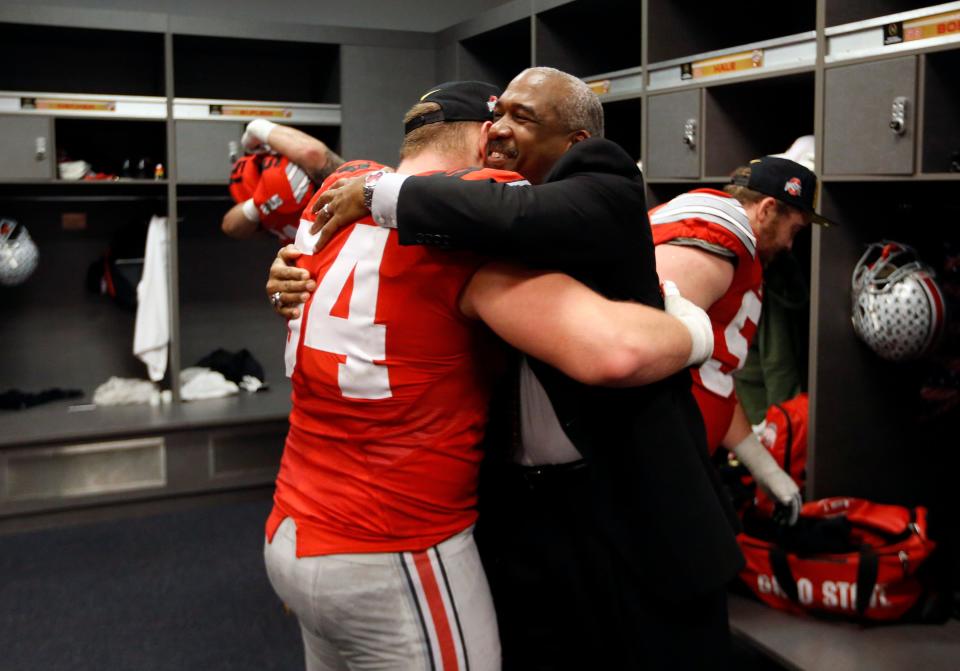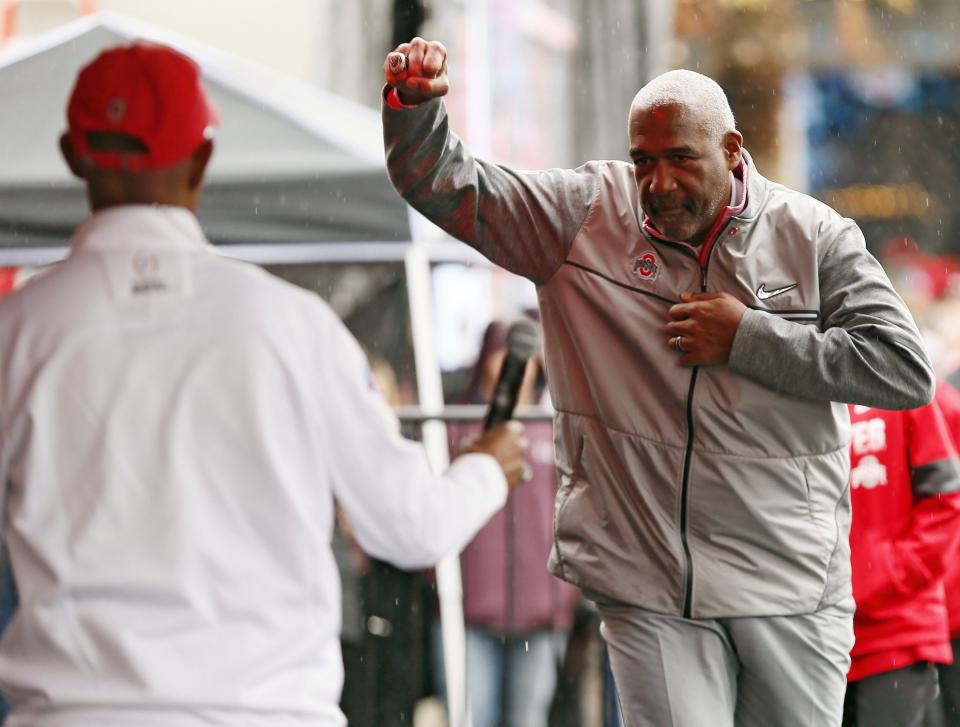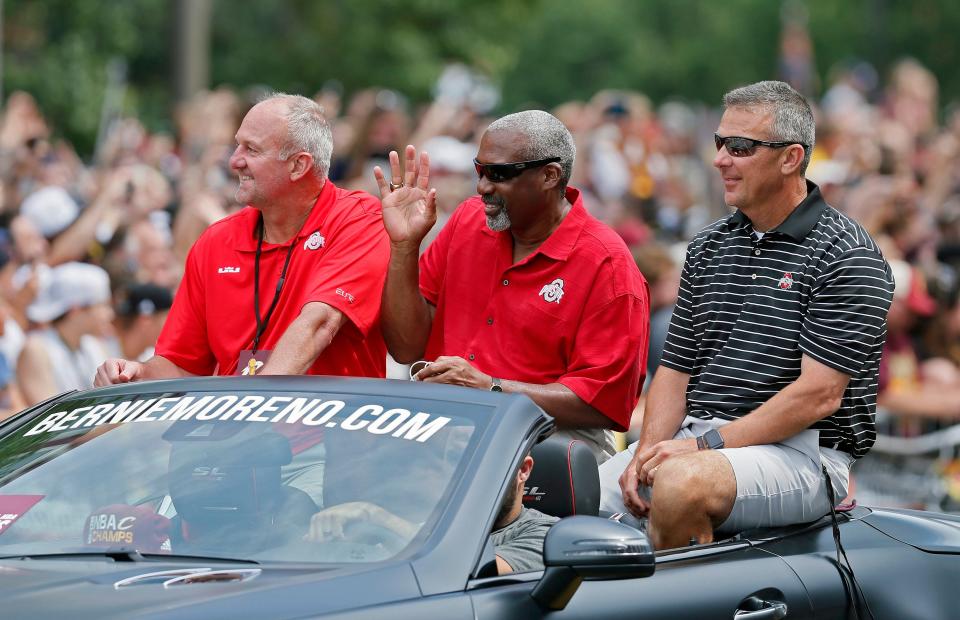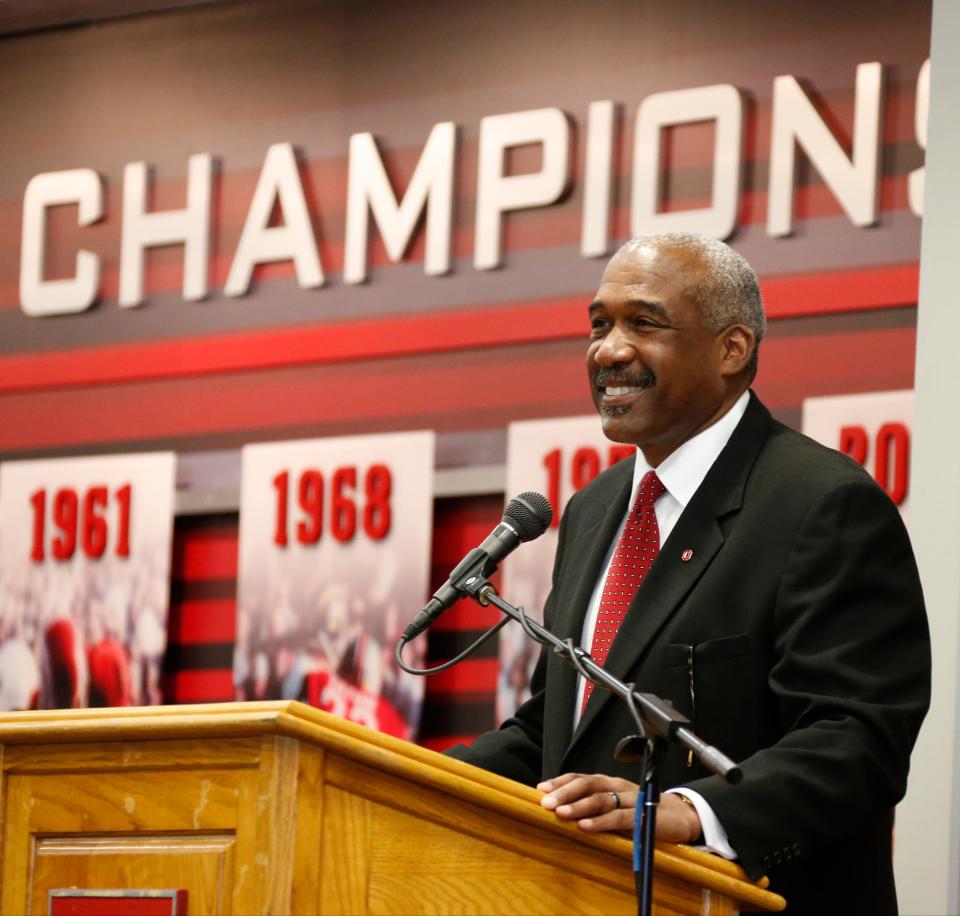Oller: Ohio State AD Gene Smith finds 'sweet spot' in making retirement decision
This time Gene Smith actually hit the sweet spot. The 67-year-old Ohio State athletic director is retiring June 30 at what feels like the perfect time, stepping away at the intersection of needed rest and ongoing college football realignment.
“I’m done, man,” Smith said Wednesday, explaining that after 39 years in athletic administration, including 19 years at OSU and stints at Eastern Michigan, Iowa State and Arizona State, he is ready to relax and let it be time for next man (or woman) up. “I’ve always believed a leader seeks to be the right leader at the right time, and July 2024 is the right time to bring in new leadership.”
Smith assured he is in excellent health – “I’m an early riser. I worked out this morning at 5” – and that he simply felt at peace with his decision to hand over the keys to one of the largest college athletic programs in the country.

“There’s just a calmness thing that comes over you,” he said. Then he added, “They always say you’re going to know, and they were right.”
Smith insisted that events dominating the headlines of college athletics, including Big Ten expansion, NIL and college football conference realignment, are not why he is trading his suit and tie for sweats and sandals (his wife, Sheila, already has a vacation to Colorado planned for 2024), but it is hard to see the timing of his retirement as merely coincidental to the landscape-changes. Or maybe not. Smith prefers to view such challenges as “opportunities.”
Gene Smith Q&A: Ohio State AD talks football, losses to Michigan and Ryan Day in Q&A
That said, even if tackling tough issues still gets his adrenaline going, there are more painful determining factors in any retirement decision that come into play.
Such as past hurts and failures taking a toll on a body and body of work.
Smith’s legacy cannot be fully determined for another 11 months, but for all the good he has done at OSU – and make no mistake the positives outweigh the negatives – he has taken enough uppercuts since arriving on campus in 2005 to have occasionally knocked his reputation to the canvas. He always got back up, but the sting remained.
The past does not haunt Smith, in part because he focuses so intently on the future, but missteps – like old football injuries – never truly heal. At least when beloved football coaches and missed bowl opportunities enter the picture.

Inside the OSU athletic department, one is hard-pressed to find anyone uttering a negative word about the man who brought a healthy and holistic game plan to the job. Smith’s easygoing manner and ability to connect and encourage co-workers runs in contrast to his predecessor, Andy Geiger, who while respected and admired, was not as much of a people person as Smith.
Gen Smith Q&A: Ohio State AD on NIL, new Big Ten commissioner and more
Outside the department, well, let’s just say Buckeye Nation has a long memory, going back to the forced resignation of football coach Jim Tressel in 2011. Some fans, perhaps many, still hold to a conspiracy theory that Smith somehow knew more than he let on about the tattoos-for-merchandise scandal that cost Tressel his job.
Adding insult to injury, Smith took more heat with his comment about finding the “sweet spot” when dealing with the NCAA over what punishment OSU would receive for the Tressel/tattoo transgressions. Smith believed that the university’s self-imposed penalties would be enough to escape an NCAA bowl ban. He was wrong. The Buckeyes were ruled bowl ineligible for 2012 after a 12-0 regular season.

“There have been times when I wish I could have done something differently,” Smith said. “Any leader who says everything was perfectly smooth and wouldn’t have changed anything and (does not regret) any decision they made … I’m not sure they’re being 100% honest with you. I guess they’re perfect. I’m not perfect.”
I asked Smith how hard the decision was to part ways with Tressel.
“That was the hardest, because he’s a good man,” he said.
Smith deserves credit for bringing Urban Meyer into the fold to replace Tressel after Luke Fickell’s one-season tryout came up short. But the positive of Meyer’s hiring, which led to a 2014 national championship – Smith considers the title a career highlight of his – eventually bled into more scar tissue when Meyer retired after the 2018 season.
The university suspended Meyer three games that season for failing to properly act upon domestic violence allegations aimed at assistant coach Zach Smith, and Smith took a pay cut for his part in not monitoring the situation more closely.

The Tressel and Meyer messes are not mere smudges on Smith’s resume, but they also do not define the AD’s job performance.
My main takeaway from Smith’s time running a 36-sport department can be summarized by something the AD said more than once through the years. He wanted to lay his head on his pillow at night knowing he would seldom need to lift it for a 2 a.m. phone call telling him some athlete or coach had screwed up.
More: 'Gene was a great leader and teammate': Urban Meyer, Ohio State coaches reflect on Gene Smith
Think back to before Smith arrived and you may recall that too many Ohio State football and basketball players found themselves on the wrong side of the law. Not that Smith’s record has been perfect, but when he says a top priority of his tenure was for the Buckeyes to recruit athletes of high character, I tend to believe him.
“We have to change this,” he said, recalling how early on he set a mandate for coaches to recruit “good people.”

Academics are part of that, too. As Ohio State went to more selective admissions for all students, “I was able to convince my coaches that we should never, ever want to put a student-athlete in a classroom where they don’t feel like they can compete. When that happens, your self-esteem goes down. Their hat goes down. They sit in the back of the class. And then they fail. We don’t have academic casualties anymore. We used to have a bunch of them. So we changed that culture.”
Culture change. Again, it’s too early to sign off on Smith’s legacy. But Ohio State’s first Black athletic director, which he said brought added pressure not to fail, deserves high marks for turning Ohio State into a brand that not only wins, but wins with people.
Get more Ohio State football news by listening to our podcasts
This article originally appeared on The Columbus Dispatch: Ohio State football grew more dominant under Gene Smith watch
